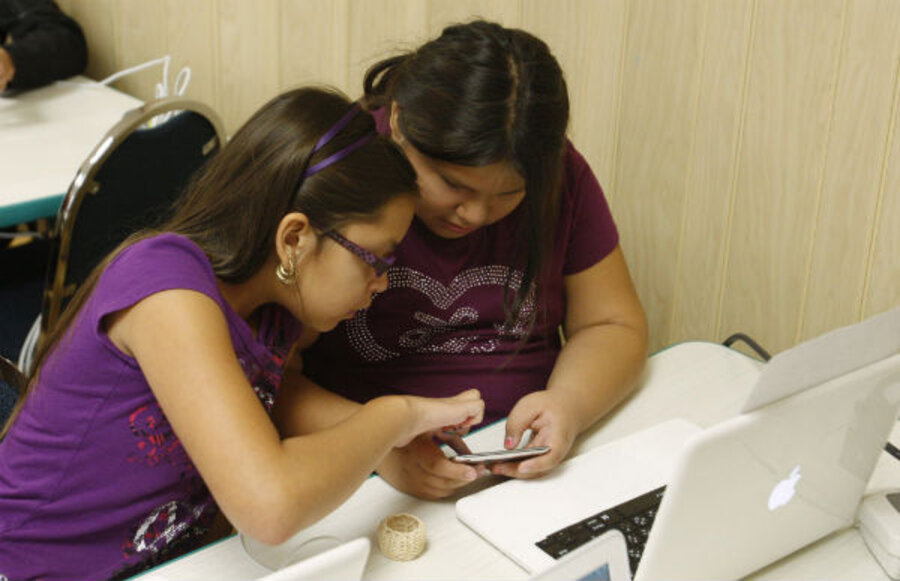Anti-social texting study: New methods confirm old theory
Loading...
The methodology for study released this past week about teens and texting was new, but the findings don’t seem to break much new ground – unless the news media had picked up on what the researchers didn’t highlight. More on the reporting in a minute; first the study, published by researchers at University of Texas, Dallas, in the Journal of Abnormal Child Psychology.
Past studies of teens’ “texting behaviors” relied on self-reporting. This one actually looked at the texts. The researchers gave 172 9th-graders (almost half and half boys and girls) around the country Blackberries and text-messaging service for a school year “with the understanding that their texts would be monitored,” PsychCentral.com reports. “The participants were rated before and after the school year for rule breaking and aggressive behavior by parents, teachers and in self reports.” At the end of the school year, four days of text messages per student were reviewed “for discussion of antisocial activities.”
“Basically,” said lead author Samuel Ehrenreich, they were trying to answer the question, “does talking about bad behavior predict bad behavior?” And what they found was that – although less than 2 percent of all the texts the researchers examined were anti-social – the anti-social texts “predicted increases” in “rule-breaking behavior” and “aggressive behavior.”
This hardly seems like news. The author himself likens texting to talking. So if one were to examine the tiny proportion of spoken communication that’s anti-social, would one be surprised if it predicted anti-social behavior? What’s interesting, here, is that the researchers seem to attribute influence not just to the content of the communication they examined but to the medium as well.
Ehrenreich referred to texting’s “unique characteristics that make it all the more powerful,” providing “a new opportunity for peer influence,” according to LiveScience.com. This at best muddies the conclusion. Is it based on the evidence gathered – the influence of peers expressed in the content – or speculation about the influence of the technology itself?
Fortunately, “the study’s collection of messages also found that texting could be a positive force for adolescents,” LiveScience reports, referring to the overwhelming majority of texts (98+ percent) that contained “positive, meaningful communication,” as Ehrenreich described it.
But that wasn’t news, that the authors were able to use only about 2 percent of all the collected texts to map them to reports of anti-social offline behavior. It didn’t show up in coverage at AlbanyTribune.com, where the headline read: “Beware The Texting: Text Messages Make It Easier For Kids to Misbehave.” Other headlines about the study were “Teens’ Texts Predict Bad Behavior” and “Delinquent Behavior May Arise from Anti-Social Texting.” At least the latter qualified “texting” with “anti-social.”
Texting among adults is mainstream, the Pew Internet Project reported three years ago, so why focus research about texting and anti-social behavior particularly on young people? And if researchers must, then what does this study add to the public discussion about youth and social media when research has already found that a young person’s psychosocial makeup and home and school environments are better predictors of online (and most probably on-phone) risk than any technology he or she uses? [That was in the comprehensive lit review done by the Internet Safety Technical Task Force at Harvard's Berkman Center for Internet & Society in 2008.] Maybe we needed the phone part confirmed? Anyway, because of all the hyperbole in media coverage of youth and technology and to be fair to youth, research that focuses on young people’s deviant behavior in media as well as the coverage of it need a critical eye.
The Christian Science Monitor has assembled a diverse group of the best family and parenting bloggers out there. Our contributing and guest bloggers are not employed or directed by the Monitor, and the views expressed are the bloggers' own, as is responsibility for the content of their blogs. Anne Collier blogs at NetFamilyNews.








